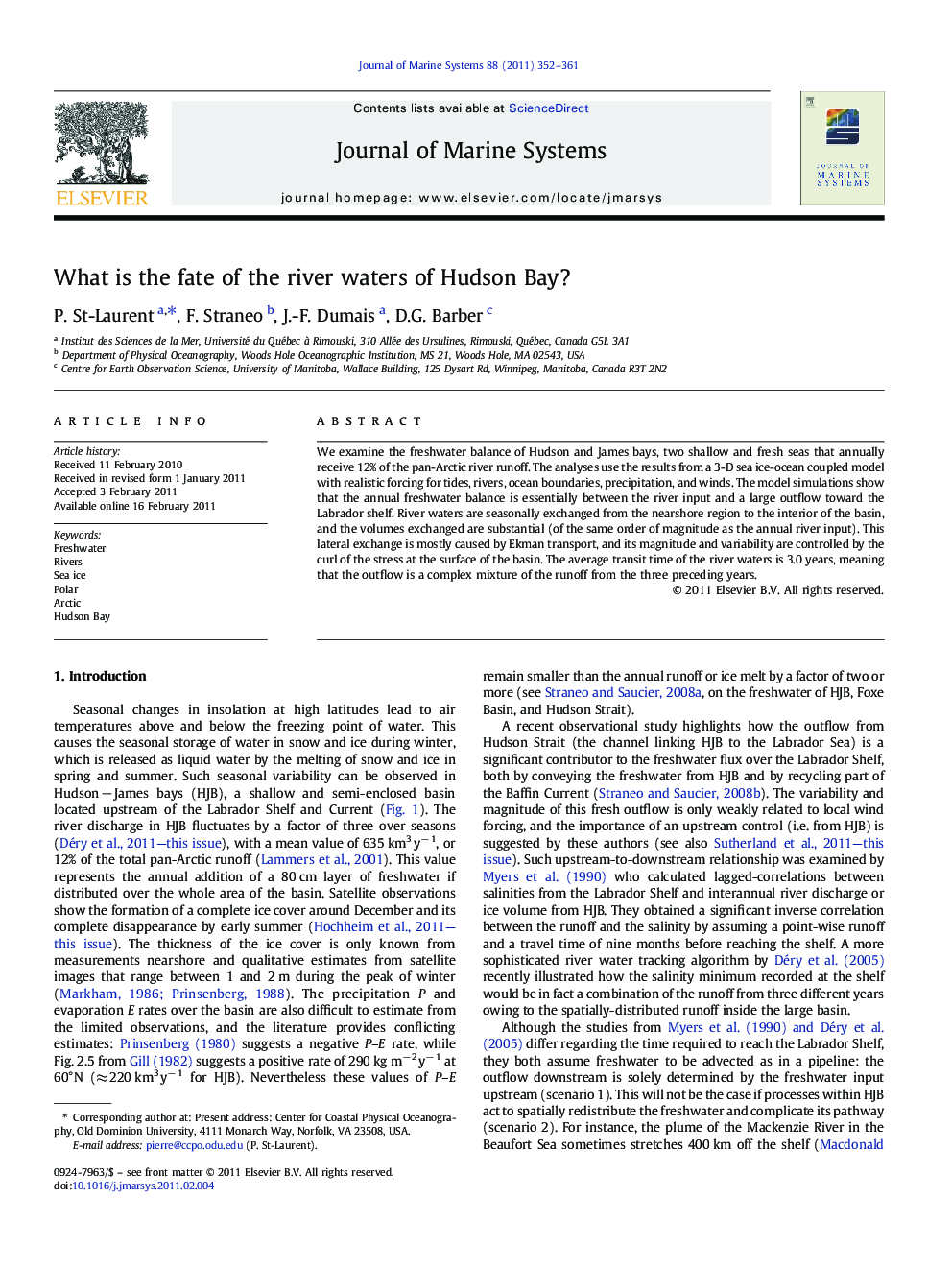| Article ID | Journal | Published Year | Pages | File Type |
|---|---|---|---|---|
| 4548342 | Journal of Marine Systems | 2011 | 10 Pages |
We examine the freshwater balance of Hudson and James bays, two shallow and fresh seas that annually receive 12% of the pan-Arctic river runoff. The analyses use the results from a 3-D sea ice-ocean coupled model with realistic forcing for tides, rivers, ocean boundaries, precipitation, and winds. The model simulations show that the annual freshwater balance is essentially between the river input and a large outflow toward the Labrador shelf. River waters are seasonally exchanged from the nearshore region to the interior of the basin, and the volumes exchanged are substantial (of the same order of magnitude as the annual river input). This lateral exchange is mostly caused by Ekman transport, and its magnitude and variability are controlled by the curl of the stress at the surface of the basin. The average transit time of the river waters is 3.0 years, meaning that the outflow is a complex mixture of the runoff from the three preceding years.
Research Highlights► The river waters of Hudson+James bays are studied with a 3-D sea ice-ocean model. ► River waters are seasonally exchanged between the boundary and interior regions. ► The exchange is controlled by Ekman transport and the curl of the wind stress. ► The transit time of the river waters is estimated to be 3.0 years.
